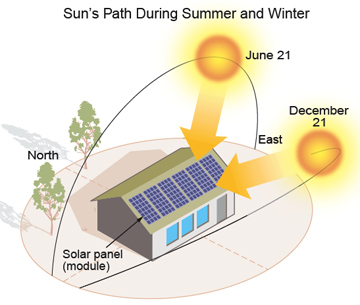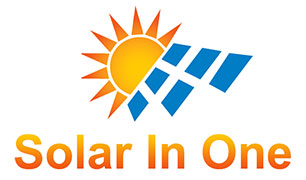
Choosing the right location and orientation for your solar panels is more than just finding a sunny spot on your roof. The science behind solar panel placement is intricate and involves understanding how angles and directions affect energy production. In this blog post, we’ll delve into the principles of optimal solar panel orientation and placement to help you harness the maximum energy from the sun.
The Angle of Incidence
The angle at which sunlight strikes a solar panel directly impacts its energy output. This angle, known as the angle of incidence, should ideally be perpendicular to the panel’s surface. In simple terms, solar panels generate the most energy when the sunlight hits them head-on.
Latitude and Tilt
For homeowners in the northern hemisphere, solar panels are typically tilted at an angle equal to their latitude. For example, if you live at 35 degrees north latitude, your panels should ideally be tilted at a 35-degree angle from the horizontal. Adjusting this tilt by a few degrees can help maximize energy generation during different seasons.
Facing the Sun
Solar panels should face true south in the northern hemisphere and true north in the southern hemisphere. This orientation ensures that the panels receive the most sunlight throughout the day. If your roof doesn’t face the optimal direction, adjustments can be made to achieve a compromise between orientation and aesthetics.
Seasonal Considerations
The sun’s angle changes with the seasons, impacting the amount of energy your panels generate. Panels that are optimally angled for summer might not be as effective during winter. Many solar systems are equipped with adjustable mounts or trackers that automatically change the panel’s orientation to track the sun’s movement throughout the day.
Shading and Obstructions
Shading is the enemy of solar panels. Even a small amount of shading on just a portion of a panel can significantly reduce its energy output. Therefore, it’s crucial to assess potential shading sources, such as trees, neighboring buildings, or chimneys, before installing solar panels.
Professional Guidance
While understanding the science behind solar panel placement is essential, it’s recommended to consult with professionals. Solar installers have the experience and tools to assess your property’s solar potential, taking into account factors like shading, roof angle, and sun path.
Optimal solar panel placement is a blend of science, mathematics, and practical considerations. By positioning your panels to capture the most sunlight and adjusting their angle based on your location, you can ensure that your solar energy system operates at its peak efficiency. Whether you’re considering a rooftop installation or a ground-mounted system, understanding the principles of solar panel placement will help you make informed decisions that maximize your energy generation and overall savings.

Leave A Comment